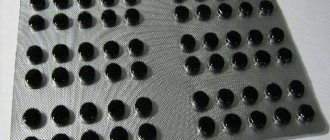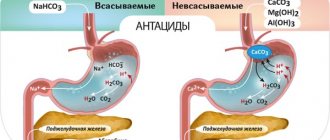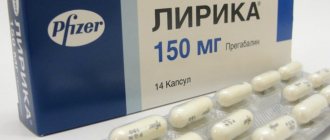Chloroform is a chemical compound that is a colorless liquid that contains chlorine. The substance was first obtained as a rubber solvent. It is also used to produce freon, dyes, and pesticides.
Until the middle of the twentieth century, the liquid was used in surgery and pharmacology as an anesthetic and anesthetic. However, it later turned out that it is very toxic, and also has a rather strong narcotic effect. Poisoning with this drug has a detrimental effect on all organs.
Pharmacological action of Chloroform
The narcotic properties of the drug are manifested in the following ways: a person’s sensitivity is dulled, a loss of strength occurs, and life activity slows down. These effects manifest themselves in the form of intoxication of the patient, or his deafness. As a result, a person experiences various illusions, delusions, and strange body movements.
The action of Chloroform is the same for people, bacteria, plants and even fungi. As a result, their growth and vital activity are suspended.
Complete loss of sensation under the influence of the drug - Chloroform anesthesia. In this case, the use of Chloroform is carried out in high doses.
Name
The name of this substance has several varieties. After all, like all organic compounds, it obeys the laws of the general nomenclature of molecules, trivial names and a name based on the composition of the molecule.
Therefore, there are several possible names for chloroform:
- carbon trichloride;
- chloroform;
- trichloromethane.
Chloroform: what is it? You can understand it from the names of the compounds, or you can consider the geometric structure of the molecule.
Indications for use Chloroform
Chloroform should be used only as prescribed by a specialist. The drug is prescribed to people who have neuralgia or myositis. Previously, Chloroform was used as a general anesthesia, but due to the occurrence of a large number of side effects, it was replaced with another drug.
Over time, experts have developed a method of anesthesia in which the harmful properties of Chloroform are reduced to an absolute minimum. In this case, Chloroform is prescribed with a large amount of oxygen; doctors must follow the exact dosage.
Chemical properties
Like all chlorinated derivatives of methane, chloroform does not exhibit chemical activity. Therefore, there are few reactions that are characteristic of it. For example, treatment with chlorine molecules in the process of technological production of all methane derivatives by chlorination. To do this, liquid chloroform is taken, the reactions proceed according to a radical mechanism, requiring the presence of ultraviolet radiation as a prerequisite and light quanta.
CHCL3 + CL2 = CCL4 + HCL
The reaction equation shows that the product is completely chlorine-substituted methane - carbon tetrachloride. Such reactions are one of the ways to produce carbon tetrachloride in industry.
Chemical properties also include an azeotropic mixture with water, which chloroform can produce. What it is? That is, one in which the components of the solution do not undergo any changes when boiling. It is impossible to separate such a mixture into fractions using the boiling method.
Another type of reaction that chloroform can undergo is the replacement of halogen atoms with other atoms or functional groups. For example, when reacted with an aqueous solution of sodium hydroxide, it forms sodium acetate:
chloroform + NaOH(aqueous solution) = sodium acetate + sodium chloride + water
In addition, a practically significant reaction is the interaction of chloroform with ammonia and potassium hydroxide (concentrated solution), since as a result of such interaction potassium cyanide is formed.
Chloroform + ammonia + potassium hydroxide = KCN + potassium chloride + water
Side effects of Chloroform
When using the drug to euthanize a patient by inhalation, Chloroform causes a weakening of cardiac activity. As a result, there is a sharp drop in blood pressure, up to cardiac arrest or collapse. If a person inhales the vapors of the drug, he will experience irritation of the gastric mucosa, and if direct exposure to the vapors occurs, the person will experience irritation of the eyes, as well as the respiratory tract.
Chloroform's ability to penetrate intact skin leads to serious inflammation and irritation.
In some cases, the drug causes serious drug addiction in patients. This addiction is called substance abuse, which is associated with the abuse of oral chloroform.
Drug captivity
Chloroform belongs to the group of inhalers. The drug affects the central nervous system. A person’s consciousness becomes dull, sensitivity to stimuli decreases, and the ability to act voluntarily is lost. The condition can be described as intoxication or stunning. With regular inhalation of vapors of the substance, toxicomania develops.
This remedy affects all organs, causing a short-term feeling of euphoria and a change in perception of the surrounding world. The development of hallucinations, mental overexcitation, and delusional states is possible.
External signs of chloroform abuse include:
- dilated pupils;
- confused speech;
- increased heart rate;
- redness of the skin of the face;
- irritation of the mucous membranes of the nose and eyes;
- speech, motor stimulation.
When consumed, endorphins are produced and pain is dulled. Substance addiction develops quite quickly. A person wants to experience pleasant sensations again and again.
You don't have to wait to file a missing person report.
In movies, loved ones of missing people are almost always told to wait 24 to 72 hours to file a police report. But in fact, applicants can report the loss when they themselves decide
.
It is believed that the first day after the abduction is the most important
, and after that the likelihood of finding someone is significantly reduced.
Of course, if an adult is missing and there is no reason to suspect that he is in danger, there may be little the police can do. Many people disappear for short periods of time and often on purpose.
Forensics does not magically solve a crime.
If you've ever watched a detective series, you're probably familiar with forensic science and its important role in the criminal justice system. And although forensic science helps gather evidence, it does not solve the crime.
.
Thus, in films you can see how investigators find a hair, a blood stain, a used cup or chewing gum at a crime scene, and often this evidence is enough to solve the crime. But there are a number of problems, such as the presence of a lot of DNA that does not relate to criminals, but simply to passers-by.
Even if the DNA definitely belongs to a certain person, you need to find a suspect
. The databases only contain the DNA of convicted criminals, and in most cases it does not match those already in the system.
In other words, the real investigation depends more on the legwork of the police than on the forensics.
Molecule structure
The chloroform molecule consists of three chlorine atoms and one hydrogen atom, each atom bonded to a central carbon. Essentially, the trichloromethane molecule is the product of the radical replacement of hydrogen atoms with chlorine atoms in the methane molecule when exposed to certain conditions.
Moreover, all C-CL bonds are completely equivalent and highly polar. The C-H bond, against the background of other bonds that have appeared in the molecule, becomes even more polarized and becomes extremely vulnerable. Therefore, with further processing of the molecule, the C-H bond is easily broken and hydrogen is replaced by other atoms (for example, also chlorine with the formation of carbon tetrachloride).
Let's look at what chloroform looks like. The formula looks like: CHCL3. The structural formula will be as follows:
Both structures reflect the chemical essence that chloroform carries. The formula shows that the molecule is quite stable and strict conditions must be applied to enter into reactions.
Drowning is a sad and silent process
You've seen it in many movies: a man in water begins to drown, waves his arms in the air to reach the surface, as if calling for help. Unfortunately, in reality, drowning is a real danger because it is very difficult to notice
.
A drowning man is running out of air and can't scream for help.
. He also instinctively uses his hands to push himself up so his mouth is near the surface so he can breathe.
Story
Trichloromethane was synthesized independently by two groups in 1831: Liebig performed the alkaline cleavage of chloral, while Subeyren obtained the compound by action of chlorine bleach on both ethanol and acetone. In 1835 the Duma prepared the substance by the alkaline splitting of trichloroacetic acid. Renault prepared trichloromethane by chlorination of monochloromethane
By the 1850s, chloroform was produced commercially using the Liebig procedure, which remained important until the 1960s. Today, trichloromethane—along with dichloromethane—is prepared exclusively and on a large scale by the chlorination of methane and monochloromethane
Production
In industry, chloroform is produced by heating a mixture of chlorine and either chloromethane or methane. At 400–500 °C, free radical halogenation occurs, converting these precursors to progressively more chlorinated compounds:
:CH + article → CHCl + HCl
:CHCl + article → CHCl + HCl
:CHCl + article → CHCl + HCl
Chloroform undergoes further chlorination to give carbon tetrachloride (CCl):
:CHCl + article → CCl + HCl
The product of this process is a mixture of four chloromethanes (chloromethane, dichloromethane, chloroform and carbon tetrachloride), which can then be separated by distillation.
Deuterochloroform
Deuterated chloroform is an isotopologue of chloroform with a single deuterium atom. CDCl is a common solvent used in NMR spectroscopy. Deuterochloroform is produced by the reaction of haloform, the reaction of acetone (or ethanol) with sodium hypochlorite or calcium hypochlorite. The haloform process is now obsolete for the production of regular chloroform. Deuterochloroform can also be prepared by reacting sodium heavy water with chloral hydrate, or from ordinary chloroform.
Unintentional formation of chloroform
The haloform reaction can also occur unintentionally in internal settings. Bleaching with hypochlorite produces halogenated compounds in side reactions; chloroform is the main by-product. Sodium hypochlorite solution (chlorine bleach) mixed with common household liquids such as acetone, butanone, ethanol or isopropyl alcohol can produce some chloroform, in addition to other compounds such as chloroacetone or dichloroacetone.
Overdose
Chloroform has a toxic effect on metabolism and the function of internal organs . The odor threshold is 0.0003 mg per liter. A clearly noticeable specific odor is observed when the concentration of Chloroform is 0.02 mg per liter.
The narcotic concentration of the substance is 0.25-0.5 mg/l. At this concentration, Chloroform provokes a change in the rate of development of reflex muscle tension , a change in the course of metabolic processes, gastric and intestinal disorders , arrhythmia , a decrease in the amount of urine excreted by the kidneys and the appearance of sugar in the urine .
Serious poisonings with the substance most often occur in people working in the pharmaceutical industry. They are accompanied by dysfunction of the heart and respiratory center , damage to the mucous membranes ( eyes , stomach , respiratory tract ).
Milder forms of poisoning are accompanied by vomiting , increased weakness throughout the body, and dizziness. Some people may experience stomach pain and restlessness.
Laboratory tests may show changes in the cellular composition of the blood , characterized by increased or decreased levels of white blood cells .
Even low concentrations of Chloroform can cause severe poisoning with liver damage .
Treatment of poisoning with Chloroform
If symptoms of poisoning occur when chloroform is administered to a patient by inhalation, anesthesia . Further measures are aimed at facilitating the airway .
a ventilator , oxygen therapy is used to eliminate oxygen starvation (humidified oxygen is supplied for inhalation) and hyperventilation is provided .
It is recommended to inhale humidified oxygen continuously for 2-4 hours, then for 30-40 minutes at 15-minute intervals.
To ensure effective oxygen transport and eliminate the symptoms and consequences of intoxication , they also resort to infusion-transfusion therapy .
The patient is warmed up and given intravenous hydrocortisone and dexamethasone (at a dose of 1 mg per kilogram of body weight). To remove toxic products the blood hemodialysis and hemosorption . of pneumonia is also considered advisable .
To normalize heart , subcutaneous injections with caffeine (10%), camphor (20%) and cordiamine (25%) are prescribed. The volume of one injection is 1-2 ml.
If symptoms of poisoning occur as a result of oral ingestion of a substance, first aid boils down to intubation of the lungs , gastric lavage , prescribing activated charcoal and laxatives to the patient - sodium salt of sulfuric acid (sodium sulfate) and vaseline oil .
The effect of Chloroform wears off within a few days. intestinal lavage before clean rinsing water (so-called siphon enema ).
Procedures aimed at preventing kidney and liver . Experts often resort to bloodletting (150-300 ml) with further partial blood replacement.
If the patient has developed a collaptoid state (mild form of collapse ), he is indicated for intravenous administration of 0.5 ml of a 0.05% solution of Strophanthin in 10-20 ml of glucose . Metazon may be prescribed .
Therapy using sympathomimetic amines ( epinephrine , norepinephrine , ephedrine , etc.) is contraindicated. In addition, sulfonamide and chlorine-containing sleeping pills should not be prescribed.
After poisoning with the drug, consuming fatty foods and alcohol is strictly prohibited.
Cleaning
Once chloroform is obtained, it needs to be purified. After all, if it is used for medical purposes, then the content of impurities in it is simply unacceptable. If the purpose of use is technical, then the content of foreign substances should be limited.
There may be various impurities that chloroform contains. What it is? What are they?
- Ethanol.
- Hydrogen chloride.
- Phosgene.
- Chlorine.
There are two main ways to purify chloroform from these impurities:
- abundant rinsing with water followed by drying (allows you to completely get rid of ethanol);
- trichloromethane is washed with a strong acid, then with a strong alkali, then with water. Subsequent processing consists of drying using a water-removing agent - calcium chloride. The substance is then distilled in a fractional column.
You should never inject medicine directly into the heart.
In Pulp Fiction and The Rock, the hero of the film survives because he was injected with medicine directly into his heart. Although intracardiac injections exist, they are practically not used
, as there are many ways to administer the drug without the fatal risk.
Injecting a drug into a person's bloodstream through a vein is a fairly effective method of distributing it, as the blood circulates throughout the body in less than a minute.
Injecting a drug directly into the heart may deliver the medicine instantly, but leave a hole in the heart. This can lead to fatal bleeding
, and also increases the risk of lung perforation, which can also be fatal.
Although an injection through a vein does not look as impressive as a stab to the sternum, it is much safer.
The police can immediately trace the call
In the movies, every time the police have to track down a call, they have to make the person talk for a long time to do so.
But this has not been true since the 70s, when mobile operators stopped using operators and switches and began using electronic switching devices
. The same technology that allows caller ID to identify a call also allows police to know where the call is coming from.
Mobile phones work a little differently because they are not tied to a specific location. But even in this case, the police can immediately track the phone
, in which GPS is activated.
But even without GPS, police can use cell towers to use triangulation techniques. And although movies and TV shows show this process happening almost instantly, it can take up to half an hour, although the connection may only last a second before this process begins.
How can you get poisoned?
In what cases is poisoning possible? A toxic compound can enter the body in different ways. Intoxication occurs for several reasons:
- ingesting dangerous liquids without a doctor’s prescription;
- exceeding the dosage during anesthesia;
- Use externally in undiluted form.
We recommend: Polonium poisoning - symptoms and consequences
Overdose in children is possible if parents are careless and leave the drug in accessible places. The degree of intoxication depends on the amount of the dangerous compound and the condition of the patient. Chronic poisoning with chloroform is possible with prolonged exposure to the substance on the body.
Torture doesn't work on people
Often in films it is seen that the best way to obtain information is through physical torture. This method is not only unethical, but, as numerous studies have shown, it does not produce results.
.
Imagine being tormented for information you don't know about, or information your tormentors don't believe. What would you do? Most of us will tell what the interrogator wants to hear in order to stop the torture.
The "bad guys" think the same thing, which is why information obtained through torture is often misleading, further slowing down the investigation.
.
A pistol with a silencer is actually not that quiet.
Gun owners and dealers call these devices “suppressors,” which explains what suppressors actually do.
They do not muffle the sound of a gun, since it is almost impossible to muffle the sound of a gun firing. A suppressor can reduce various decibels mainly to protect the shooter's hearing
, and not to disguise its location.
And in real life it doesn't look nearly as silent as it does in secret agent movies.










